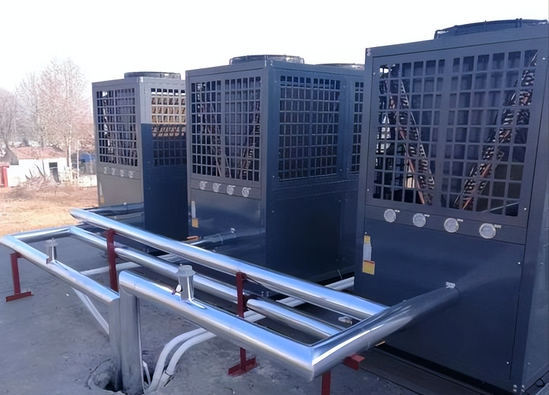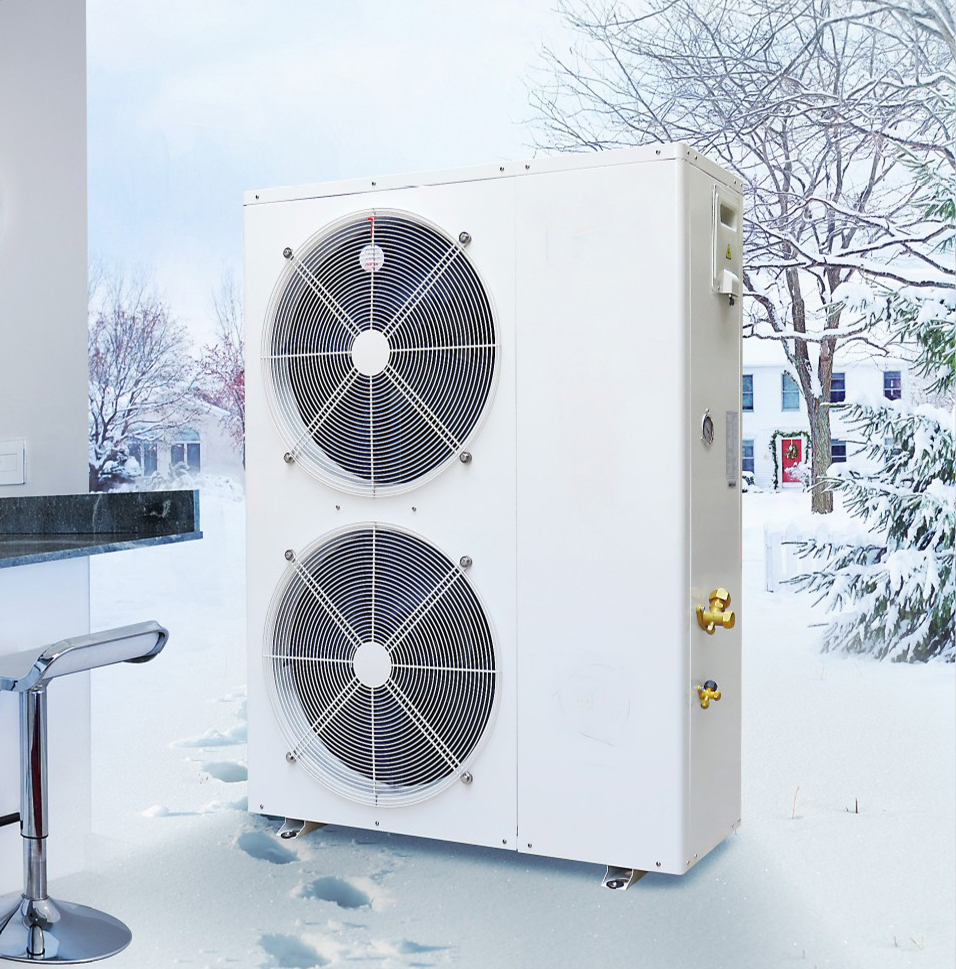There are many heating equipment in winter. With the advantages of environmental protection and energy conservation, air source heat pump has gradually emerged under the promotion of the “coal to electricity” project, and has become a hot spot for heating equipment. Air source heat pump can be divided into normal temperature type, low temperature type and ultra-low temperature type. It can still work normally under the environment of tens of degrees below zero. In order to maintain this state, it is necessary to give priority to the problem of frost formation and defrosting during heating at low temperature in winter.
What effect will frost have on the air source heat pump?
Although air source heat pump has a high heat transfer technology, it will also be affected by frost during heating in winter. The main effects are:
① blocking the passage between fins, increasing the resistance of air flow;
② Increase the heat resistance of the heat exchanger, and the heat exchange capacity decreases;
③ The heat pump host defrosts frequently, and the defrosting is endless. The defrosting process is an air conditioning operation process, which not only cannot produce hot water, but also consumes the heat of the original hot water. The discharged chilled water recoils into the thermal insulation tank, making the water temperature further drop;
④ The evaporation temperature drops, the energy efficiency ratio decreases, and the operation performance of the heat pump deteriorates until it cannot work normally.
⑤ The failure of the unit to work normally will directly cause economic losses to customers, until the fear of heat pump products is generated, leading to a more difficult situation for the entire industry.
Frosting form of heat pump and its solution
1. Low temperature, normal frost formation
When the outdoor ambient temperature is lower than 0 ℃ in winter, the heat pump host runs for a long time during heating, and the whole surface of the heat exchanger of the outdoor unit will be frosted evenly.
Cause of frosting: When the temperature of the heat exchanger of the heat pump host is lower than the dew point temperature of the ambient air, condensation water will be generated on the surface of the radiating fins of the whole heat exchanger. When the ambient air temperature is lower than 0 ℃, the condensate will condense into thin frost, which will affect the heating effect of the heat pump host when the frost is serious.
Solution: The impact of frost on the heating capacity of the unit was considered during the research and development of the air to water heat pump system. Therefore, the heat pump units are designed with automatic frost function to keep the bottom of the heat pump unit in a medium low temperature state, so that frost can be removed to ensure the normal operation of the heat pump unit.
2. The temperature is not low, and abnormal frosting occurs
① The outdoor ambient temperature is greater than 0 ℃. Shortly after the heat pump host is started, the condensation water on the surface of the radiating fins of the whole heat exchanger of the outdoor heat pump host will condense into thin frost, and soon the frost layer will become thicker and thicker. The water temperature of indoor fan coil or floor heating coil is getting lower and lower, which makes the heating effect worse and presents the phenomenon of frequent defrosting. This fault is generally caused by the dirty and blocked surface of the radiating fins of the heat exchanger of the outdoor heat pump host, the failure of the fan system of the outdoor heat pump host, or the obstruction at the air inlet and outlet of the heat exchanger of the outdoor heat pump host.
Solution: Clean the heat exchanger of the outdoor heat pump host, check the fan system or remove the obstacles at the air inlet and outlet.
② The outdoor ambient temperature is greater than 0 ℃, and the heat pump host is started soon. The bottom of the heat exchanger of the outdoor heat pump host (starting from the inlet of the heat exchanger at the capillary outlet) frosts very thick, and most of the heat exchangers have no condensation water, and the frosting continues to extend from bottom to top over time; The fan coil unit in the room is always in the low speed operation of cold air prevention; The air conditioner is frequently in defrosting operation. This fault is generally caused by the lack of refrigerant or insufficient refrigerant content in the system.
Solution: First check whether there is a leakage point in the system. If there is a leakage point, repair it first, and finally add sufficient refrigerant.
③ The outdoor ambient temperature is greater than 0 ℃, and the heat pump host is started soon. The upper part of the heat exchanger of the outdoor heat pump host (the outlet of the heat exchanger and the air return pipe) frosts very thick, and the frosting on the heat exchanger extends from top to bottom (from the outlet of the heat exchanger to the inlet of the heat exchanger) over time; And the heating effect becomes worse; The air conditioner is frequently in defrosting operation. This fault is usually caused by too much refrigerant in the system. The fault often occurs after the refrigerant is added for maintenance.
Solution: Release some refrigerant to the system, so that the refrigerant content is just right, and make the heat pump unit return to normal operation.
summary
In order to get a good heating effect in winter, heat pump system must first solve the problem of frosting and defrosting of the heat pump host in cold temperatures, so as to ensure that the heat pump unit can heat normally at low temperatures. The split heat pump system is superior to ordinary air conditioners in its low temperature resistance and strong heating capacity, which is also related to the strong defrosting technology of the air source heat pump, so as to ensure that the air to water heat pump can maintain normal operation and have efficient heating capacity at a temperature of tens of degrees below zero.
Post time: Dec-26-2022



